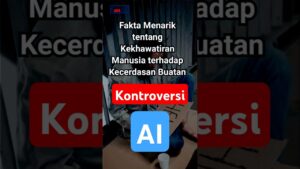Many organisations unprepared for AI cybersecurity threats

While AI improves the detection of cybersecurity threats, it simultaneously ushers in more advanced challenges.
Research from Keeper Security finds that, despite the implementation of AI-related policies, many organisations remain inadequately prepared for AI-powered threats.
84% of IT and security leaders find AI-enhanced tools have exacerbated the challenge of detecting phishing and smishing attacks, which were already significant threats. In response, 81% of organisations have enacted AI usage policies for employees. Confidence in these measures runs high, with 77% of leaders expressing familiarity with best practices for AI security.
Gap between AI cybersecurity policy and threats preparedness
More than half (51%) of security leaders view AI-driven attacks as the most severe threat to their organisations. Alarmingly, 35% of respondents feel ill-prepared to address these attacks compared to other cyber threats.
Organisations are deploying several key strategies to meet these emerging challenges:
Data encryption: Utilised by 51% of IT leaders, encryption serves as a crucial defence against unauthorised access and is vital against AI-fuelled attacks.
Employee training and awareness: With 45% of organisations prioritising enhanced training programmes, there is a focused effort to equip employees to recognise and counter AI-driven phishing and smishing intrusions.
Advanced threat detection systems: 41% of organisations are investing in these systems, underscoring the need for improved detection and response to sophisticated AI threats.
The advent of AI-driven cyber threats undeniably presents new challenges. Nevertheless, fundamental cybersecurity practices – such as data encryption, employee education, and advanced threat detection – continue to be essential. Organisations must ensure these essential measures are consistently re-evaluated and adjusted to counter emerging threats.
In addition to these core practices, advanced security frameworks like zero trust and Privileged Access Management (PAM) solutions can bolster an organisation’s resilience.
Zero trust demands continuous verification of all users, devices, and applications, reducing the risk of unauthorised access and minimising potential damage during an attack. PAM offers targeted security for an organisation’s most sensitive accounts, crucial for defending against complex AI-driven threats that aim at high-level credentials.
Darren Guccione, CEO and Co-Founder of Keeper Security, commented: “AI-driven attacks are a formidable challenge, but by reinforcing our cybersecurity fundamentals and adopting advanced security measures, we can build resilient defences against these evolving threats.”
Proactivity is also key for organisations—regularly reviewing security policies, performing routine audits, and fostering a culture of cybersecurity awareness are all essential.
While organisations are advancing, cybersecurity requires perpetual vigilance. Merging traditional practices with modern approaches like zero trust and PAM will empower organisations to maintain an edge over developing AI-powered threats.
(Photo by Growtika)
See also: King’s Business School: How AI is transforming problem-solving
Want to learn more about AI and big data from industry leaders? Check out AI & Big Data Expo taking place in Amsterdam, California, and London. The comprehensive event is co-located with other leading events including Intelligent Automation Conference, BlockX, Digital Transformation Week, and Cyber Security & Cloud Expo.
Explore other upcoming enterprise technology events and webinars powered by TechForge here.













